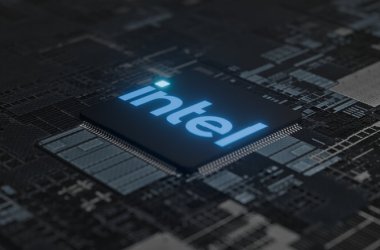![]() Worldwide semiconductor revenue totalled $419.7 billion in 2017, a 22.2 percent increase from 2016, according to preliminary results by Gartner, Inc. Undersupply helped drive 64 percent revenue growth in the memory market, which accounted for 31 percent of total semiconductor revenue in 2017.
Worldwide semiconductor revenue totalled $419.7 billion in 2017, a 22.2 percent increase from 2016, according to preliminary results by Gartner, Inc. Undersupply helped drive 64 percent revenue growth in the memory market, which accounted for 31 percent of total semiconductor revenue in 2017.
“The largest memory supplier, Samsung Electronics, gained the most market share and took the No. 1 position from Intel — the first time Intel has been toppled since 1992,” said Andrew Norwood, research vice president, Gartner. “Memory accounted for more than two-thirds of all semiconductor revenue growth in 2017, and became the largest semiconductor category.”
The key driver behind the booming memory revenue was higher prices due to a supply shortage. NAND flash prices increased year over year for the first time ever, up 17 percent, while DRAM prices rose 44 percent.
Equipment companies could not absorb these price increases so passed them onto consumers, making everything from PCs to smartphones more expensive in 2017.
Other major memory vendors, including SK Hynix and Micron Technology, also performed strongly in 2017 and rose in the rankings.
Top 10 semiconductor vendors by revenue, worldwide, 2017 (Millions of US Dollars)
| 2017 Rank | 2016 Rank | Vendor | 2017 Revenue | 2017 Market Share (%) | 2016 Revenue | 2016-2017 Growth (%) |
| 1 | 2 | Samsung Electronics | 61,215 | 14.6 | 40,104 | 52.6 |
| 2 | 1 | Intel | 57,712 | 13.8 | 54,091 | 6.7 |
| 3 | 4 | SK Hynix | 26,309 | 6.3 | 14,700 | 79.0 |
| 4 | 6 | Micron Technology | 23,062 | 5.5 | 12,950 | 78.1 |
| 5 | 3 | Qualcomm | 17,063 | 4.1 | 15,415 | 10.7 |
| 6 | 5 | Broadcom | 15,490 | 3.7 | 13,223 | 17.1 |
| 7 | 7 | Texas Instruments | 13,806 | 3.3 | 11,901 | 16.0 |
| 8 | 8 | Toshiba | 12,813 | 3.1 | 9,918 | 29.2 |
| 9 | 17 | Western Digital | 9,181 | 2.2 | 4,170 | 120.2 |
| 10 | 9 | NXP | 8,651 | 2.1 | 9,306 | -7.0 |
| Others | 174,418 | 41.6 | 157,736 | 10.6 | ||
| Total Market | 419,720 | 100.0 | 343,514 | 22.2 |
Source: Gartner (January 2018)
Second-placed Intel grew its revenue 6.7 percent in 2017, driven by 6 percent growth in data center processor revenue due to demand from cloud and communications service providers. Intel’s PC processor revenue grew more slowly at 1.9 percent, but average PC prices are on the rise again after years of decline following the market’s shift from traditional desktops toward two-in-one and ultramobile devices.
The current rankings may not last long, however, “Samsung’s lead is literally built on sand, in the form of memory silicon,” said Norwood. “Memory pricing will weaken in 2018, initially for NAND flash and then DRAM in 2019 as China increases its memory production capacity. We then expect Samsung to lose a lot of the revenue gains it has made.”
2017 was a relatively quiet year for mergers and acquisitions. Qualcomm’s acquisition of NXP was one big deal that was expected to close in 2017, but did not. Qualcomm still plans to complete the deal in 2018, but this has now been complicated by Broadcom’s attempted takeover of Qualcomm.
“The combined revenues of Broadcom, Qualcomm and NXP were $41.2 billion in 2017 — a total beaten only by Samsung and Intel,” said Norwood. “If Broadcom can finalise this double acquisition and Samsung’s memory revenue falls as forecast, then Samsung could slip to third place during the next memory downturn in 2019.”





